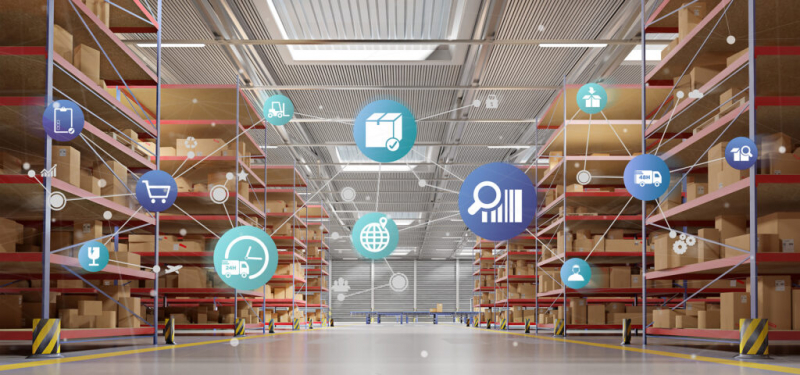Walk into most warehouses and it still looks like the same world it was 30 years ago - forklifts humming, steel racks stacked to the roof, and someone shouting over the noise about a missing shipment. But behind all that, something very different is happening. The traditional “big cold box full of stuff” is turning digital. Quietly, steadily.
From robotics to live data feeds, warehouses are becoming more like living systems that think and respond in real time. Even in complex areas like chemical warehousing, digital tools are helping people track conditions, predict risks, and keep the whole operation running safer and smoother. It’s not just about speed - it’s about control, and being able to see everything happening before it turns into a mess.
Let’s look at three of the big forces driving this shift, and why they matter to pretty much every industry still moving physical goods around.

1. IoT and Automation: The End of “Guesswork Logistics”
A few years ago, most warehouses ran on clipboards and crossed fingers. If something went wrong - say, a freezer got too warm or a shipment disappeared - you’d only find out after the damage was done. Now, tiny IoT sensors are scattered across every corner of a facility, feeding data straight to dashboards that tell managers exactly what’s going on right now.
A tank’s getting too hot? You’ll know instantly. A pallet’s been sitting too long in one spot? It flags it automatically. Some sites even use drones for inventory checks instead of sending a tired worker up a shaky ladder.
It’s not about replacing people; it’s about giving them better tools so they can stop reacting and start anticipating. And when you’re dealing with volatile materials or temperature-sensitive products - the sort stored in chemical warehousing facilities - that kind of early warning system isn’t a luxury, it’s survival.
2. AI and Predictive Thinking: Seeing Problems Before They Happen
AI’s another one of those words people roll their eyes at until they’ve actually seen what it can do. In warehouses, it’s gone from a gimmick to a real problem-solver. Instead of waiting for accidents, AI systems sift through mountains of data - temperature logs, shipment timings, even maintenance reports - and start spotting patterns that humans just can’t.
That’s the whole point of predictive risk management: using information to prevent things from going wrong rather than cleaning up afterward. If the system notices a small vibration anomaly in a machine that always breaks two days later, it can trigger maintenance early.
In real life, that means fewer shutdowns, fewer safety scares, and less wasted inventory. It’s not magic - it’s just the logical next step when you’ve got data coming in from everywhere and need a smarter way to handle it.
3. The Cloud and the DIY Tech Revolution
Here’s where things really open up. Thanks to cloud computing, warehouses don’t need to be locked silos anymore. The guy managing a site in one city and the supplier halfway across the country can literally be looking at the same live data, the same stock levels, at the same time. No more “I never got that spreadsheet” nonsense.
And here’s the cool part - you don’t even need to be a coder anymore to make that tech useful. There’s no need to code from scratch; low-code platforms let regular managers drag and drop their own dashboards, safety checklists, or maintenance logs. You could build an app to log spills or alert your team about temperature spikes before lunch is over.
Ten years ago, that would’ve taken an IT department, a consultant, and a month of back-and-forth emails. Now? You can spin it up yourself before the next shift starts.
The Bigger Picture
There’s no turning back now. Warehouses are evolving from dusty storage spaces into something closer to intelligent ecosystems. It’s messy and not every system plays nice with the others yet, but the direction’s clear.
The real magic isn’t in the technology - it’s in what it allows. A manager walking the floor with live alerts in his pocket. A safety team that fixes problems before they’re dangerous. A small business using the same kind of digital backbone that used to be reserved for global corporations.
That’s the new industrial age: a world where the walls still stand, the forklifts still move, but the intelligence is everywhere - invisible, quiet, and always learning.
Post Comment
Be the first to post comment!




